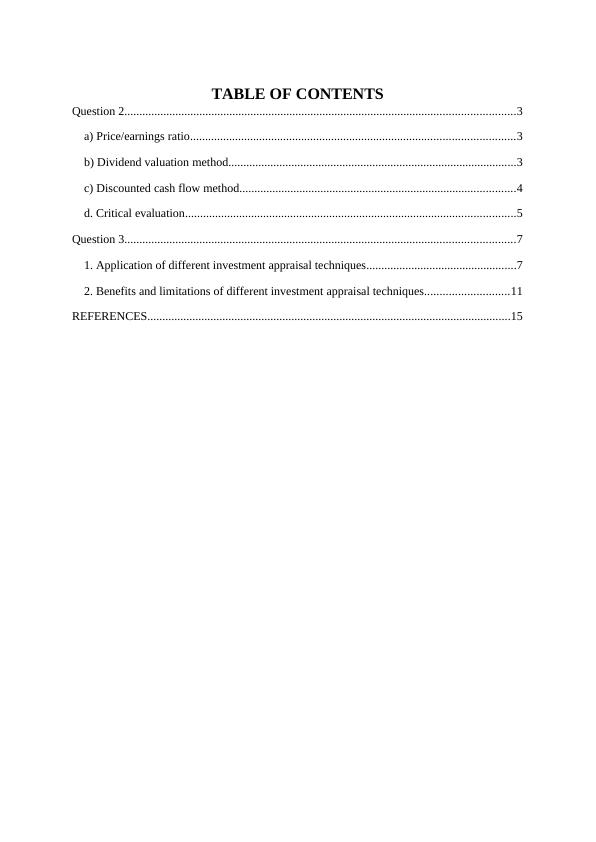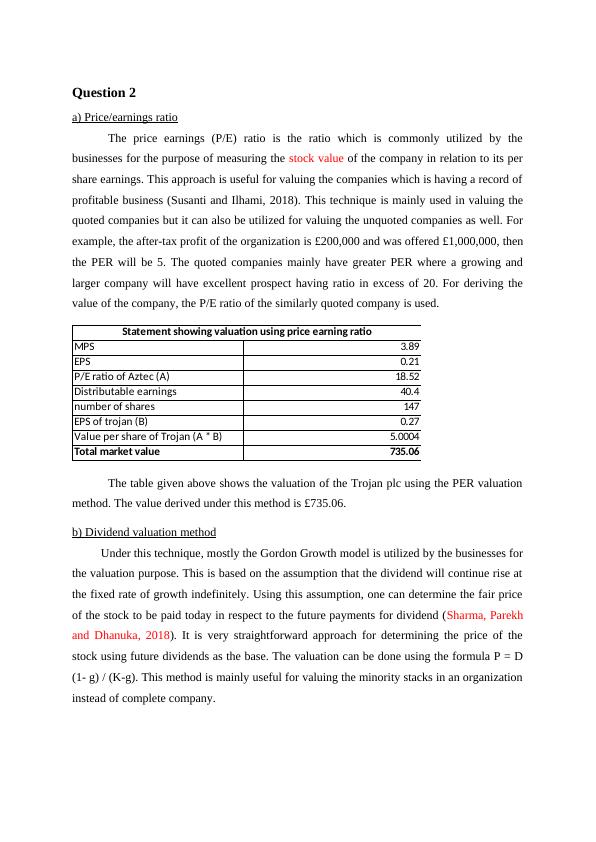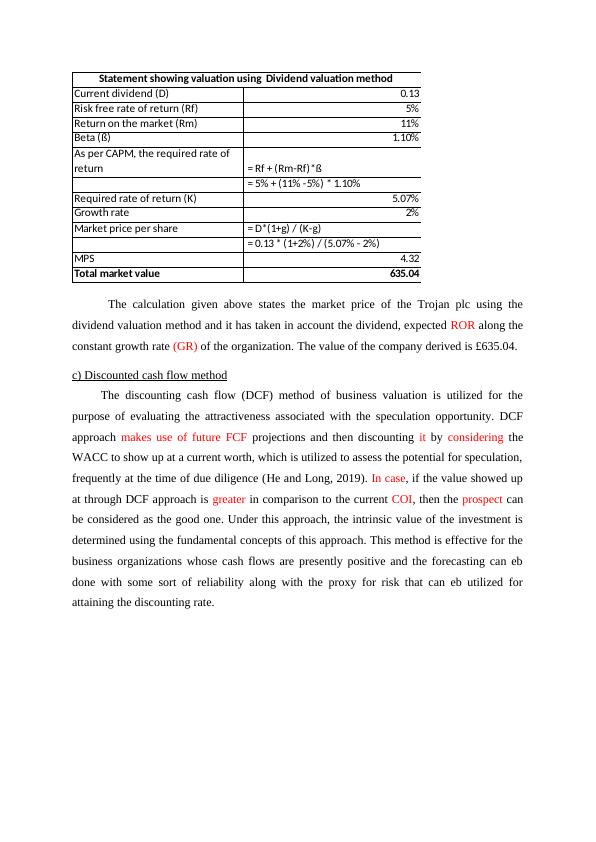Valuation Methods in Financial Management
Discuss factors to consider in dividend policy decision-making for a listed company and practical issues in determining the size of dividend payment.
15 Pages4211 Words87 Views
Added on 2023-01-09
About This Document
This document discusses various valuation methods in financial management, including the price/earnings ratio, dividend valuation method, and discounted cash flow method. It provides a detailed explanation of each method, along with their applications, benefits, and limitations. Additionally, the document explores different investment appraisal techniques such as the payback period, accounting rate of return, net present value, and internal rate of return.
Valuation Methods in Financial Management
Discuss factors to consider in dividend policy decision-making for a listed company and practical issues in determining the size of dividend payment.
Added on 2023-01-09
ShareRelated Documents
End of preview
Want to access all the pages? Upload your documents or become a member.
Valuation Techniques in Financial Management
|14
|3912
|40
Valuation Techniques in Financial Management
|15
|4549
|57
Valuation Techniques in Financial Management
|14
|4117
|100
Valuation Techniques in Financial Analysis
|15
|3794
|35
Valuation Techniques in Financial Management
|14
|3890
|90
Valuation Techniques in Financial Management
|14
|3775
|45




